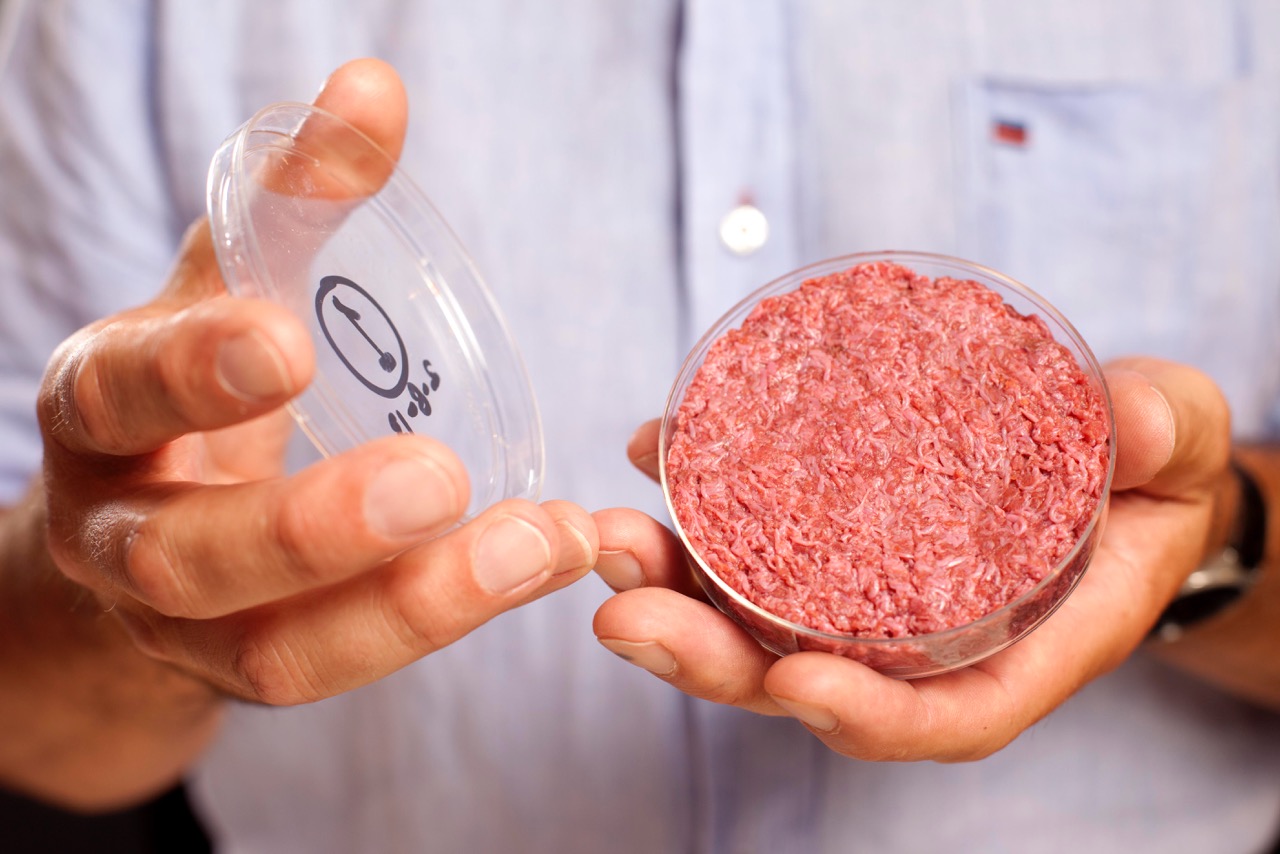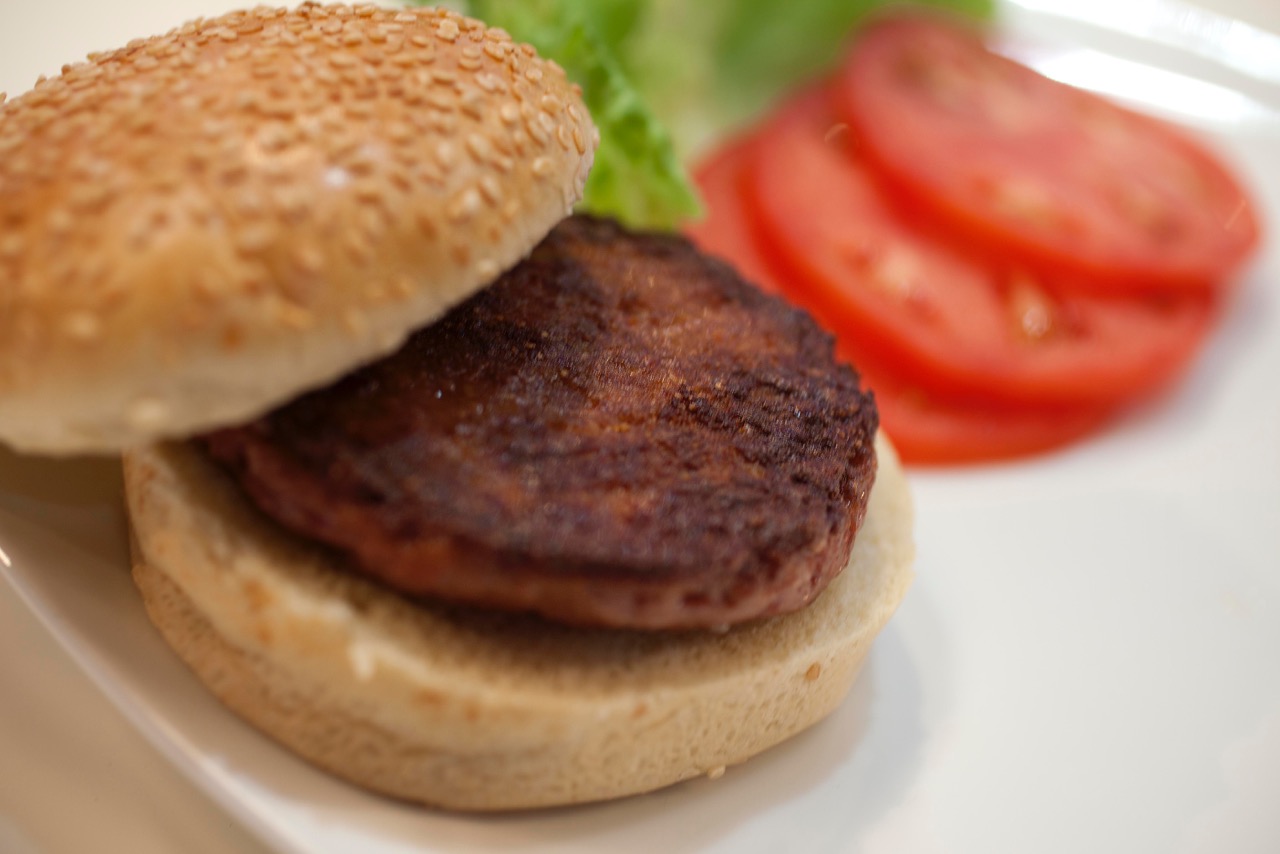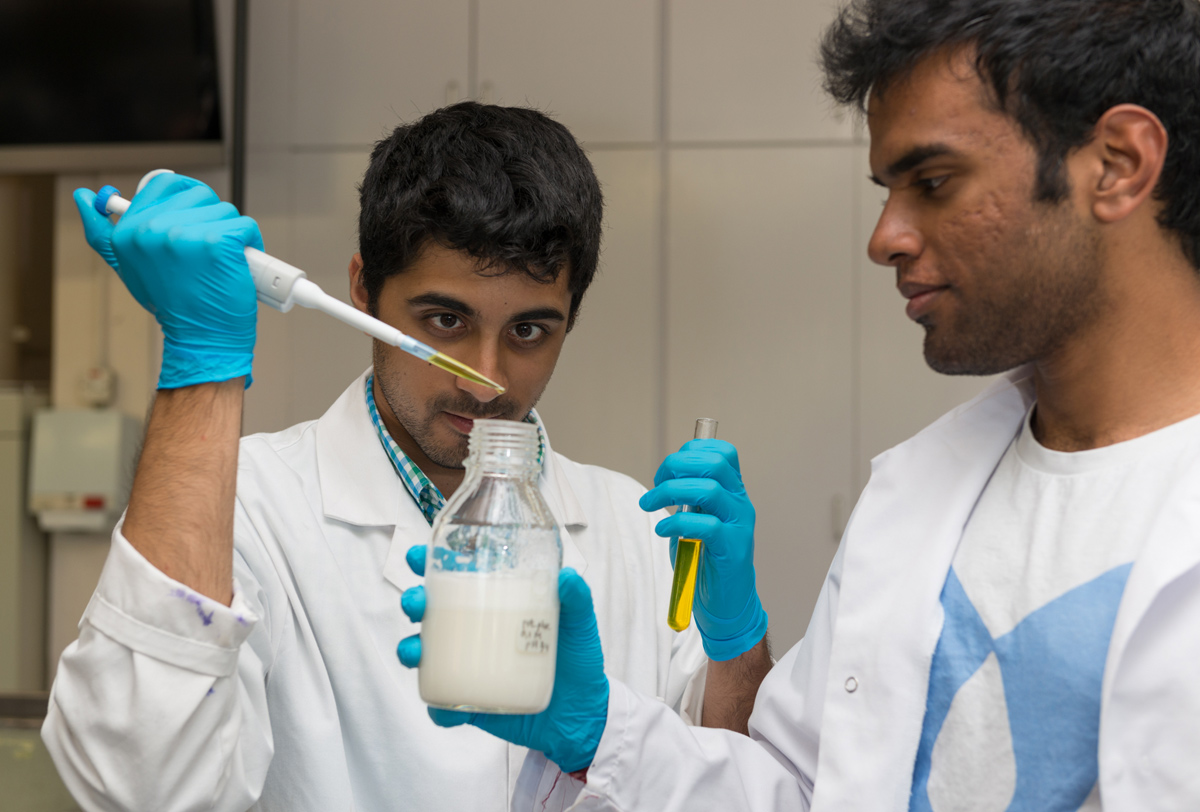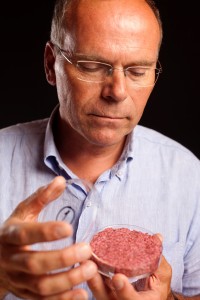Lab Chops and Test Tube Milk and Why Kiwi Farmers should be worried
In the next ten years cows will be disrupted. Yes. You read right. No more cows. No longer will big, hefty and gas producing cows and cattle be required to provide we mere mortals with their sweet, creamy nutrient-rich milk. Nor will we need them to appease the West’s love affair for juicy burgers or filet mignon. In fact, the need for all kinds of livestock such as pigs, chickens and lambs we currently rely on to appease our insatiable appetite for crispy bacon, fried eggs and Sunday night roasts – gone.
Just as the cellphone put the landline telephone industry out to pasture, technology and science are rapidly redefining the playing field for the humble farm animal, transforming the whole agricultural and food production sector as we know it. Within a matter of years. A not so flavoursome thought for consumers and farmers to swallow. Especially those in New Zealand.
Whether bio-printing beef, synthesising milk or producing fake burgers made from plants that taste better than Al Brown’s prime Angus patties, scientists-turned-entrepreneurs and technology based startups around the world like Beyond Meat, Mosameat, Hampton Creek and Impossible Foods, are using technology and medical science like 3D bio printing and genetics research traditionally used for human medicine to produce in vitro (lab made), environmentally friendly and (arguably) ethical alternatives to our favourite protein laden foods and beverages. NZ dairy farmers and Fonterra take note. No longer will fellow Swandri wearing farmers be your competitors on the global market, but health scientists, universities and bio tech start ups will be. And sooner than you think.
Introducing Lab Chops
Pioneer of the world’s first laboratory grown burger, Professor Mark Post after years of research, has successfully mastered the art of producing in vitro processed meat using cultured cell technology. He and his team at Maastricht University in the Netherlands have refined the process of harvesting muscle stem cells from living cows and feeding these in a controlled environment where they multiply and grow into strands of meat protein. Thousands of meat strips (20,000 to be precise) are then layered together for size and vegetable-based extracts including algae, amino acids and yeast (all standard fare in food technology) are added to create the taste, texture and colour of a real meat patty. After receiving the thumbs up for taste and texture by a panel of discerning food critics (including Michelin star chefs) in London two years ago, the team are now are looking at mass production and have established a spin-off company, Mosameat, to scale its operations and cost economies.
Another start up similarly focused on producing in vitro meat to the masses, is Brooklyn based Modern Meadow. The company uses pain free biopsies and tissue engineering to produce livestock products with 3D bio printing technology. The end product is biologically identical to the real deal – tasty succulent meat- only with no animal slaughter and less inputs of land, water, energy and chemicals than conventional animal agriculture. Modern Meadow’s “cultured” leather products and beef are the first cabs off the rank. But the plan is to go big with poultry and fish too.
If eating animals isn’t your thing, even without the slaughter – not to worry. California based start ups like Impossible Foods, founded by Stanford biologist Patrick Brown, and Hampton Creek have both developed a new generation of delicious and sustainable meats, cheeses and mayo substitutes made entirely from plants that have no tie to animal or egg protein whatsoever. Impossible Foods’ burgers combine a carefully engineered combination of plant derived amino acids, fats, and nutrients selected for their texture, colour and, most importantly, flavour. The patties are so rich and succulent they leave even staunch meat eaters salivating for more. And Hampton Creek’s egg-free mayonnaise and cookies made from top-secret variety of Canadian yellow pea protein are appealing to even the most strict vegans.
How? Companies like Mosameat, Impossible Food have found the secret to recreating meat’s juicy flavour through the addition of ‘heme’, or plant “blood”, an important molecule in hemoglobin found in certain plants. The burgers are so similar to the real deal that when lifted off the plate they leave a meat like blood residue. For the hard core carnivore in the room, a massive tick. Lab Chops, Facon (Fake bacon) and schmeat are just some of the new terms sprouting up as lab cultured meat and milk are fast becoming a very real realty for the masses.
What’s more, biologists are also proving that what can be done to meat, can be done to milk. A scary thought for Kiwi dairy farmers. Silicon Valley start-up, Muufri, led by a pair of young bioengineers, has reinvented the way milk is produced industrially with the help of genetically engineered yeast. The start up has teamed with the University College Cork in Ireland to create a proof of concept and is now on track for producing the first glass of cow free, lactose free and cholesterol free milk. Its founders aim to have Muufri’s artificial milk on mainstream supermarket shelves within the next two years. They also predict that within 100 years this will be the main way we get our milk. If this isn’t enough to get New Zealand’s dairy sector sitting up and listening, then we are in trouble.
Yuck, your first reaction might be. Who wants to eat meat and milk made in a test tube anyway? Understandably so. For hundreds of thousands of years we mere mortal homo sapiens have evolved a taste and need for protein – namely in the form of meat we’ve hunted and sourced straight from the land and mother nature herself. So the concept of lab grown beef or synthetically processed milk may seem bit scary for the deeply carnivorous amongst us to stomach. But as unpalatable as the concept of lab grown burgers may sound right now, the arguments for petri dish meat and milk production are becoming all the more compelling. And numerous.
The first argument driving lab cultured meat and milk is perhaps the most obvious. Food security. According to the United Nations, by the year 2050, the world’s population will have reached over nine and a half billion. Two billion more mouths than today. It doesn’t take a rocket scientist to realise that that the resources required to produce the growing demand for food it will be in short supply. At the same time, increasing incomes and hunger for protein in developing countries like China and India are leading a shift in diets towards meat, with a higher environmental footprint. Estimates by the UN Food and Agriculture Organisation (FAO) indicate that the demand for meat is going to increase by more than two-thirds in the next 40 years and that current production methods are not sustainable.
To add, agriculture and livestock production is one of the most environmentally taxing industries.
Not only does it place significant pressure on resources such as land and water but it is also a major contributor to global warming through unchecked releases of methane, a greenhouse gas 20 times more potent than carbon dioxide.
According to Andras Forages, CEO at Modern Meadow, his lab grown meat alternatives use 55% less energy, produce 4% of the GHG emissions and require only 1% of land use compared to that of conventionally farmed beef. Granted, Forage’s stats are based on conventional US intensive farming methods, not those of New Zealand’s. Using Modern Meadow’s lab methods, the environmental benefits alone are compelling. Not to mention the ethical benefits of producing cultured animal products.
Leading into another convincing argument underpinning lab cultured meat – Animal Welfare, or lack thereof. While New Zealand has a relatively clean track record in terms of farm ethics and animal treatment, the rest of the world does not. Across the world’s largest agricultural exporting nations like the United States, England and the Netherlands intensive agriculture and factory farming is rife. Animal welfare groups say factory farming conditions go well beyond what is morally objectionable and crammed conditions have become incubators for disease and mass outbreaks like avian flu, e coli and foot & mouth disease. Add to this issues around food health and safety from intensive use of chemicals, antibiotics and pesticides, and suddenly the idea of 3D bio printed lab chops and cultured milk are starting to look like very palatable options to satisfy, in an ethical way, our growing desire for protein and bloody meat. Not to mention a legitimate means of solving one of the most imminent food crises.
But if environmental and ethical issues aren’t big enough issues to convince skeptics of the lab chop benefits, then maybe money is. To date the biggest barrier to getting lab cultured meat into the mouths of consumers globally has been the cost of production. In a recent interview with the BBC, Verstrate said that in 2013 it cost Post and his team more than €250,000 to produce as this is still very novel science to make its first palatable hamburger in the Maastricht University lab. But after a few years refining the process and using economies of scale with current technology, he says the beef can now be produced for around $80/kilo – or around $11 (USD) a burger. Still not competitive when compared to the current price of the average Big Mac. but with an exponential decrease in cost, which he believes will drop even further in the next few years with further R&D and economies of scale. Post, Forages and other entrepreneurs playing in this space do too, especially as bullish biotech food start ups around the world are starting to attract lucrative investment funds from venture capitalists faster than chef Gordon Ramsay can say the proverbial f-word.
Beyond Meat’s latest series E round took its total capital raising to $183 million (USD) including investment from big names such as Bill Gates and Kleiner Perkins. Modern Meadow has raised more than $13m from high-profile backers, including Paypal founder Peter Thiel’s Breakout Labs, Horizons Ventures and even the US Department of Agriculture and Maastricht University’s Mosameat has recently taken 10 million Euro in investment to build a plant that proves that cultured meat can be produced at scale. “In the long run Cultured Beef could be cheaper than conventionally farmed beef, and certainly better for the environment” says Post.
So what does this all mean for NZ?
As a nation that for generations has quite comfortably rested on it’s green pastoral-based laurels as a major source of competitive advantage, this puts NZ in a precarious position.
The rise of bio tech start ups synthesising milk and protein that not only requires a fraction of the environmental impact, but also bears ethical, cost and health benefits, are putting NZ’s entire agricultural system at strategic risk. While we Kiwis would like to think the world will want our diary and cows forever, its time to get off the grass and get real. With current rates of progress with science and technology beef and milk will be disrupted. It is no longer a question of if, but when. Experts like Post and Forages conservatively estimate conventionally farmed meat will be gone within the next ten to fifteen years. Milk will likely be much quicker. Sure, New Zealand’s grass fed exports might remain in the mix, but they will likely comprise luxury food items like caviar or rhino sausages, accessible only to the financially privileged few, says Post.
The more pertinent question for New Zealand then, since it is inevitable our key industries will be turned upside down, is who is going got do it and who will the winners be? In the global race to agricultural sustainability do we want these disruptors to be in Silicon Valley or in NZ? One would hope the latter.
For NZ to have a chance to compete, a few things need to change. And fast. NZ’s education system and initiatives from companies need to invest heavily in science and engineering. To compete with the technology coming out of Silicon Valley and Europe. Classic stem subjects (science, technology, engineering and math). Toute de suite. Science and technology will pave the way for competitive solutions, and it is usually engineers who start companies.
The public and private sector also need to invest heavily in the entrepreneurs driving developments at the nexus of agriculture and lab based bio tech, as well as create the conditions and ecosystem that will allow this new generation of entrepreneurs to thrive. By international standards New Zealand’s VC community is small and conservative. So if we want our entrepreneurs and future economy to thrive we need to back them with our own money. Confidently and lucratively. But there is hope for NZ’s ag sector in this rapidly changing mix. Kiwis are known for being innovative, and the sheer virtue of our small size and nimble governance structure means we can make decisions and redirect our ship’s direction pretty quickly once we frame our strategy.
Yes, New Zealand’s agricultural landscape will be starkly different in years to come with the rise of lab based protein. No longer will cultural legacies like grass grazing, Daisy the cow play as important a role in our economic future. However, if our tech and science sectors can successfully create and provide alternative solutions to sustainably produce beef and milk to the world, our future will be socially and environmentally and financially rosy. And potentially even greener than before.







Leave a comment